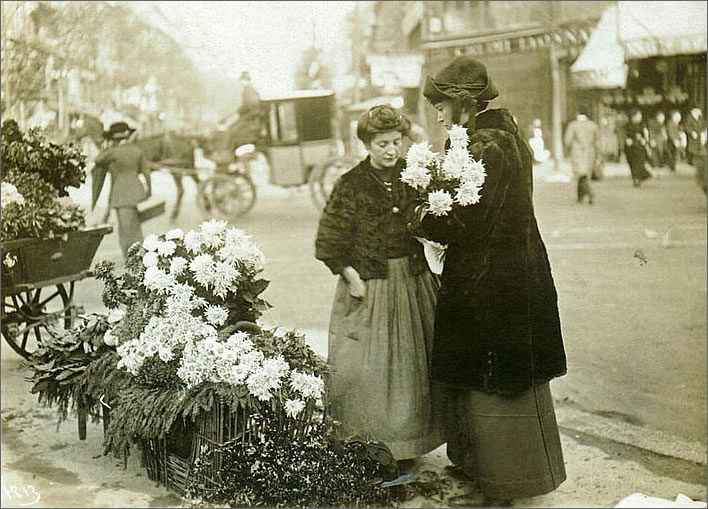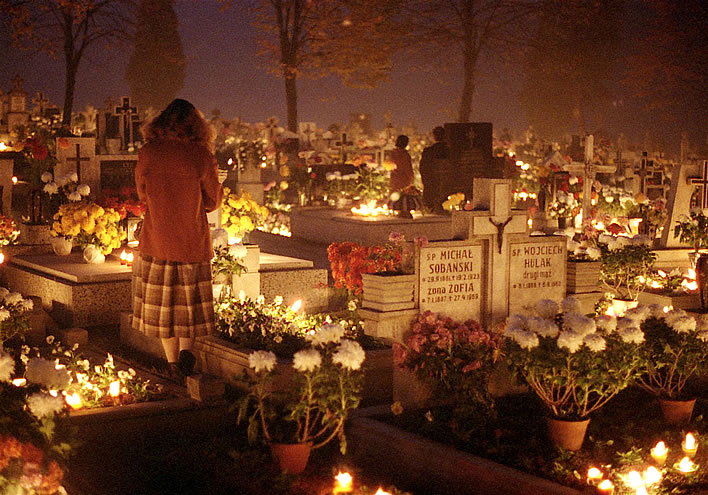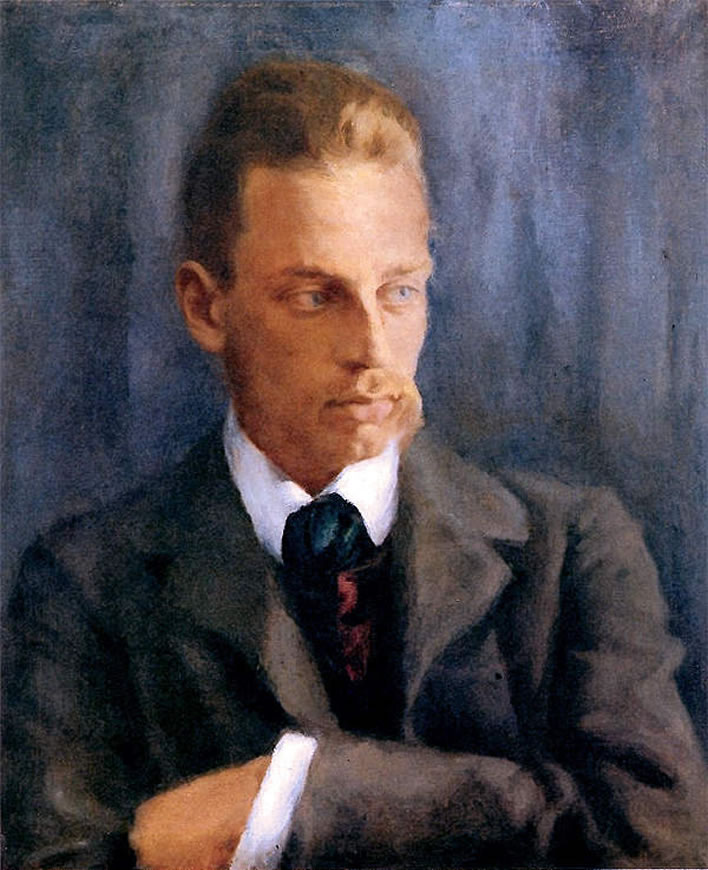All Souls' Day
Posted by Richard on UTC 2019-11-02 14:22
The two Christian festivals of early November, All Saints' Day on the first and All Souls' Day on the second (the two often merge) seem to be undergoing a revival thanks to the internet. We have discussed one or the other of them on this website a few times in the past – three times in 2015 (Transitioning to November / All Saints' Day, 1 November / All Souls' Day, 2 November), once in 2016 (All Saints' and All Souls' Days 2016).
Attractive photographs of glimmering candles in scenic cemeteries – scenic, that is, for the visitors, not the residents – are certainly a help in our age of pixels, but perhaps the revival may also be due to a growing revulsion at the brainless nonsense of Halloween. Christmas and Easter and All Souls' Day, however silly their externals have become, at least possess a core of meaning – Halloween has none. It is empty at its heart.
The popularity of All Souls' Day also suggests that a ritual commemoration of the family dead fulfils a need for the living. The celebration is particularly important for Catholics, since pious prayer for intercession on the part of a loved one may still be effective in getting the soul of the departed over the salvation line.

A photograph of a woman buying flowers on All Saints' Day in Paris in 1911. The flowers are, of course, chrysanthemums. Image: photographer unknown, source Vintage Everyday.
Protestants generally don't go down this doctrinal path, but marking the memory of the deceased has an emotional power: it may do nothing for the soul of the deceased, but may do something for the soul of the living pious.
Graves are decorated, traditionally with chrysanthemums, even more traditionally white ones, but these days anything goes – practical ornamented winter arrangements are popular, since they stay respectable until the first snow buries them. In churchyards across the Christian world a forest of tiny flames in red or white glass holders flicker through the graveyard night.

All Saints Day, 1 November 1984 in the Beskiel Cemetery, Oswiecim, Poland. Image: ©John Thaxter.
Rainer Maria Rilke, Allerseelen I
The Austro-Hungarian writer Rainer Maria Rilke (1875-1926) was brought up in the intense Catholic tradition of the Habsburg monarchy and mentions All Souls' Day – der Tag der weißen Chrysanthemen, 'the Day of the White Chrysanthemums' as he called it – in a number of his poems.
The early collection from which the present poem has been taken is entitled Larenopfer, 'sacrifices to the household gods', possibly an allusion to this event in itself.
|
Allerseelen I
Rings liegt der Tag von Allerseelen voll Wehmut und voll Blütenduft, und hundert bunte Lichter schwelen vom Feld des Friedens in die Luft. |
All Souls' Day I
All around lies the day of All Souls', full of melancholy and the scent of flowers, and a hundred colourful lights smoulder from the field of peace into the air. |
| Sie senden Palmen heut und Rosen; der Gärtner ordnet sie mit Sinn — und kehrt zum Eck der Glaubenslosen die alten, welken Blumen hin. |
They send palms today and roses; the gardener arranges them with care — and sweeps the old, wilting flowers into the corner where the unbelievers lie. |
Rainer Maria Rilke, 'Allerseelen I' from Larenopfer, Inselverlag, 1895.
Quoting the early Rilke to mark this year's All Souls' Day is an irony that we do not take lightly. Rilke, under the influence of Schopenhauer and especially Nietzsche, came to reject all ideas of an afterlife; he found Christianity irrational and pathologically skewed as a result of its obsession with the eternal existence of the individual soul.
His own painful and drawn-out death at fifty-one from leukaemia was borne with an heroic, rationalist stoicism that would be worthy of any Christian saint.

A 1901 portrait of Rainer Maria Rilke by the German painter Helmuth Westhoff (1891-1977). Westhoff was a younger brother of the sculptress Clara Westhoff (1878-1954), who married Rilke in the spring of 1901. They had a daughter, Ruth (1901-1972), but went their own ways after 1904. They remained in an amicable relationship until Rilke's death. Image: unknown source.
0 Comments UTC Loaded:
Input rules for comments: No HTML, no images. Comments can be nested to a depth of eight. Surround a long quotation with curly braces: {blockquote}. Well-formed URLs will be rendered as links automatically. Do not click on links unless you are confident that they are safe. You have been warned!